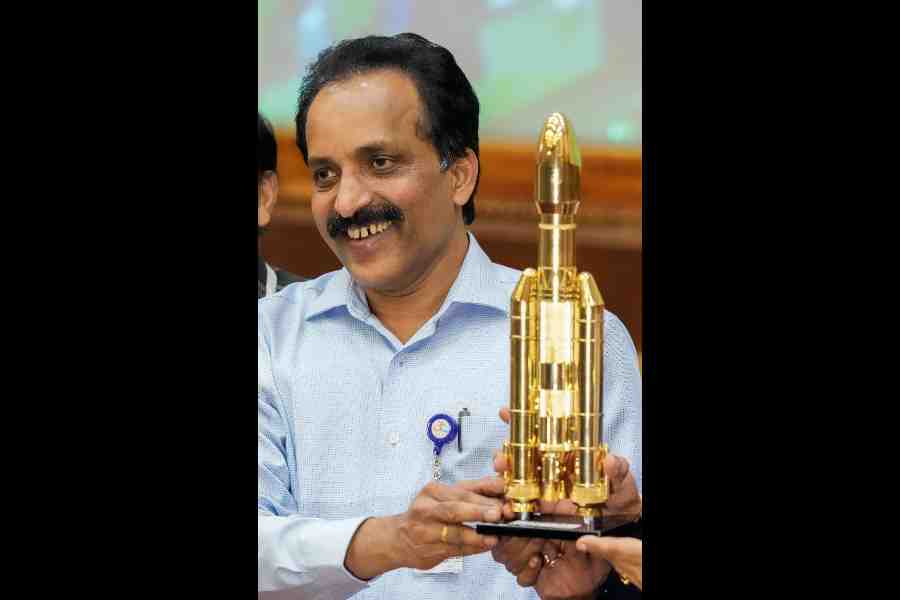S. Somanath won the wager.
Hundreds of scientists and engineers at the Indian Space Research Organisation (Isro) planned, designed and contributed to the Chandrayaan-3 mission. But in the weeks ahead of the spacecraft’s launch, Isro chairman Somanath had described all those efforts through a distilled terse wager.
He had asserted that Isro had tried to build a fail-proof spacecraft that could land safely despite myriad failures — engines, thrusters, algorithms, or sensors — which could occur during its descent. “Whatever may fail, we still want it to land at the required speed,” Somanath had said.
Engineers familiar with rocket engines and spacecraft say an absolutely fail-proof design is impossible.
“Theoretically, the probability of a crash is never zero,” said Duvvuri Subrahmanyam, an assistant professor in the aerospace engineering department at the Indian Institute of Science, Bangalore. “The probability can be made small, very small, but not zero. That said, I am delighted that the small non-zero probability didn’t act up today,” he told The Telegraph.
Subrahmanyam and other experts say the standard generic approach to minimising the risk of adverse outcomes — a catastrophic crash, for instance, in a spacecraft’s landing attempt — involves establishing multiple redundancies that will serve as backups should systems fail.
Somanath, on the sidelines of a space-industry conference in New Delhi last month, had himself outlined multiple strategies that Isro mission planners have adopted to ensure a successful landing, including computer tests that simulate multiple failure scenarios to work out alternative solutions.
Such tests, according to aerospace experts who were not part of those landing simulations on computer, would typically challenge the lander with algorithm failures, sensor failures, engine and thruster failures — and determine how residual available systems could still achieve the objectives.
The lander had three objectives: slow down, stay steady and find a flat space. The lander’s rocket engines would slow its speed from 1,680m per second while in orbit to less than 3m per second at the point of touchdown. A set of thrusters strategically positioned on different sides of the lander would maintain its orientation and angle, making continuous corrections to any deviations, to ensure that the lander remains upright and lands on its “feet”.
As the lander approached the lunar surface, an onboard computer compared what the lander’s camera saw with a bank of images of the lunar terrain looking for the landing site and for a flat space, free of craters and boulders. “Finding an appropriate flat space is critical because you don’t want to land safely and immediately topple or roll over because the landing took place on a sloping crater,” Subrahmanyam said.
But, he said, the “most challenging aspect” is the powered descent itself.
“Using rockets to slow down a spacecraft and land is incredibly challenging, much much harder than using a rocket to fly off into space,” Subrahmanyam said. “This is because we’re trying to slow down the spacecraft and as the speed slows down, the orientation dynamics which determines the orientation of the spacecraft, becomes extremely sensitive to small changes — the smallest deviation has the potential to cause disaster. The control algorithms are extremely complex.”
Isro officials on Wednesday described the Chandrayaan-3 lander module’s descent and soft landing as flawless and attributed the feat to efforts from multiple teams involved in navigation, guidance, control and propulsion of the craft.
The successful soft landing has been the result of “tremendous amount of effort” by the Chandrayaan-3 project team, said M. Sankaran, the director of the U.R. Rao Satellite Centre, the Isro unit that designs and develops satellites and spacecraft.
“The number of simulations that have been done, the number of reviews they have gone through, the amount of criticism they have faced — and overcome — I’ve been watching this for the past four years,” Sankaran said, minutes after the landing.










